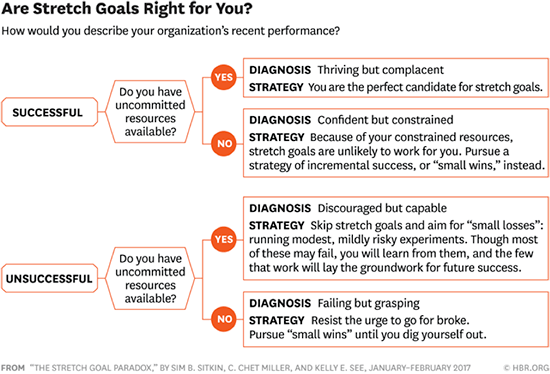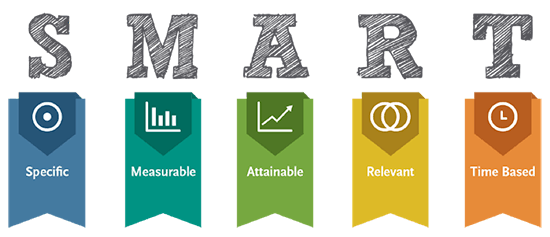How to Set Effective Sales Goals for Your Sales Team

Contents
We live in a goal-oriented world: New Year’s resolutions, academic goals for the school year, personal goals to change our life around, and professional goals at the office. It’s goals galore.
With a SaaS business, you may have all kinds of business goals: increasing customer lifetime value, decreasing churn, increasing average revenue per customer, or decreasing cost per acquisition, to say nothing of your marketing campaign goals.
But ultimately, it’s all about growth, right? And while “growth” can take the form of many metrics, you’re really only interested in one: sales.

Revenue growth is the alpha and omega of business success. To drive growth, you
need sales goals to be challenging but realistic – lofty but attainable. And just the right amount. Too few, and your sales department is unmotivated. Too many, and they’re overwhelmed.
Setting concrete goals increases motivation. A study of Harvard students found those with a goal-oriented plan performed 30% better on average than those without one. The lesson of that story? Set goals.
And if you fall within a certain bracket, you might want to consider setting stretch goals – or “big, hairy, audacious goals” as described in Built to Last – if you want to kick your company-wide motivation and achievement up a notch.
Think of stretch goals as goals beyond your goals. They go the extra mile. They differ from your “regular” business goals – which are lofty but attainable small wins – in that they’re very difficult to achieve, and require a complete rethinking of how things get done. They’re likely possible…but extremely difficult to pull off. And they don’t work for everyone.
In the chart below, you’ll see that stretch goals really only apply to those companies that are already successful, but with uncommitted resources available. If you don’t meet both of those criteria, you’re better off skipping stretch goals until you find yourself in that category.
“The most unprofitable item ever manufactured is an excuse.” ~John Mason, Author
No excuses. Just goals appropriate for your business and situation that lead to growth, sales, and revenue. Set small, medium, and/or big, hairy, audacious goals.
Just set them. Easier said than done? Let’s take a closer look.

Define Your “Realistic”
Let’s set the idea of stretch goals aside for the moment. You might be a prime candidate for them. You might not.
Either way, you need to start with the smaller, more attainable goals. The “regular” ones.
The realistic ones.
According to the Harvard Business Review, a few salespeople falling short of sales goals is the fault of the individual, but a majority is the fault of the goal itself.
No one understands your industry, market, products, and customers better than you, so no one can define ‘realistic’ better than you. There’s no such thing as an industry-wide goal.
You need to set realistic business goals based on whatever hard data you have available. Your sales records, historic growth rates, and the performance of your closest competitors can all provide invaluable insight. If you’ve historically experienced 5% growth each year, asking for 25% is probably not realistic. But 10%? That might be. It’s ambitious, but feasible.
Analyze the growth potential for your market and industry: is it largely untapped, or oversaturated? Is there room for you to get a bigger piece of the pie?
Evaluate your existing sales team: are they motivated, can they handle increased expectations, and do you have the resources and money to quickly scale up if necessary?
Is your business set up for success? Do you have a capable growth team in place to deliver more sales-ready leads to your hungry sales personnel?
Ask the questions. Find the answers. Bridge the gaps.
“Setting goals is the first step in turning the invisible into the visible.” ~Tony Robbins
Set Monthly Sales Goals
Set monthly – or even weekly – sales goals, depending on your business model. It’s easy to set either vague sales goals – “increase revenue” – or long-term sales goals – “increase revenue by 15% within 2 years.”
Vague is a waste of time. It’s too broad and lacks the specificity needed to identify the steps and milestones.
Long-term has its place, but you need more than that. You want frequent “small wins” to boost morale and keep everyone motivated. It’s hard to get excited about the eighth month of an 18 month plan with only one end goal.
Enter the monthly sales goal.
As a general rule of thumb, you can set a baseline monthly sales goal by examining your break-even annual revenue. How much do you need each year to pay salaries, production costs, marketing, distribution, utilities, and whatever other expenses you have?
Divide that figure by twelve, and you have your minimum monthly sales goal. Of course, no one ever succeeded in anything by aiming for the minimum. It’s just a place to start. Anything less than that, and you’re losing money.
So how do you realistically add to that amount and set sales goals that encourage growth? You crunch the numbers to find actionable steps.
Crunch Some Numbers
Data-backed business decisions are good decisions. Take the guesswork out of the equation and use the numbers available to you.
Want to increase sales and revenue? Great. Go for it.
If only it were that simple. Deciding to increase revenue is not rocket science, but without some concrete data to work with, you can’t generate the actionable steps to make it happen.
If, for example, your sales team historically makes five sales for every 100 calls, and you wanted to increase your monthly goal to ten sales, they’d need to make about 200 calls per month.
That’s actionable. That’s concrete and clear. That’s data-backed. What’s the goal? Make 200 sales calls each month.
Now, that’s not to say you’re done. Once you’ve identified your actionable step or goal, you next need to determine whether it’s possible or realistic. 200 sales calls is an average of 6.67 each and every day, including weekends.
If they each take 45 minutes or more, it’s not going to happen. If it requires only 10 minutes, then that can probably work.
Your business. Your data. Your numbers. Use them to set activity-oriented goals rather than straight-up dollars and cents or percentages. Your salespeople will be happier and more motivated, and it’s much more likely to happen.
“Every sale has five obstacles: no need, no money, no hurry, no desire, no trust.” ~Zig Ziglar
Small, actionable goals are crucial to your business. They allow your sales personnel to chip away at them. It gives them the opportunity for quick and frequent “wins” to propel them towards the big picture goal(s).
Find What’s Working and What’s Not

If you want to increase your revenue, you need cold, hard data to analyze your entire sales cycle:
- Sales cycle length
- Conversion rates
- Losses
- Closing ratio
- Effective channels
- And more
Collect, analyze, and discuss as a team everything and anything to do with turning leads into customers:
- What’s working? What’s not?
- What resources, tools, and skills can turn things around and fill the gaps?
- Where are we losing most leads? How might we reverse that trend? Is our churn rate above or below industry benchmarks?
- Where do our ideal customers hang out online? Are we reaching them there?
- Are we spending too much on acquisition? Not enough?
- And on and on
Answer these questions and more, and you’ve got a set of small and medium goals to work towards that will have a positive impact on your bottom line.
Those small and medium goals achieved build the foundation for the bigger goals.
We already mentioned that stretch goals are best utilized by successful businesses with available but unallocated resources. Do everything you can to fall into that category. Set and hit small goals. Grow. Cultivate your resources – money, knowledge, experience, people, equipment, and so on – to create a surplus that can safely be used on those “big, hairy, audacious” goals that take you from good to great.
Existing success and a resource surplus allowed the Prius development team at Toyota to achieve a stretch goal from the top brass – increase its fuel efficiency from 50% to 100% – in just one year. They tried more than 80 different prototypes.
Jack Welch, the legendary CEO at GM, required stretch goals from every department within the organization. When the airplane engine division offered to produce a 25% reduction in engine defects, Welch bumped it to 70%. This audacious stretch goal required the engine department to completely rethink everything from how workers were hired and trained, to the way the factory operated.
The managers analyzed every previous defect and reworked their manufacturing from every conceivable angle. And it worked: the department reduced defects by 75% in just a few years.
You don’t have to be Toyota or GM to set goals that deliver big change and even bigger results. You just need to be SMART.
Be SMART
Goals are best when they’re deliberately set and data-backed.
But they also need to be SMART. Whether they’re personal, professional, or a mix of both, SMART goals get achieved:
- Specific. Be clear and explicit about what you want to achieve. Specific goals generated better performance 90% of the time over vague or easy goals.
- Measurable. Set a deadline or timeframe to motivate and track progress, and ensure goals are easily ascertained: 10% reduction in acquisition cost, half as many lost leads, $500,000 in ARR, and so on.
- Achievable. Be realistic. Is this goal something you can actually attain? If not, you’re wasting everyone’s time and effort.
- Relevant. Does this goal align with your other business goals?
- Time-bound. Set a deadline. I’ll say this one again. Set. A. Deadline. It eliminates most procrastination, motivates most employees, and helps keep goals on track and moving forward.
Whether you’re looking to increase profits, improve complaint response time, enhance customer experience, increase employee retention, become more productive, or grow your business, the SMART template generates goals that are easy to track and hit.

A healthy business plan includes both SMART and stretch goals.
Incentives = Greater Motivation
We all like to be recognized for our efforts. We all like to feel appreciated and rewarded for our hard work.
Salespeople are no different.
So, try weekly or monthly contests and leaderboards with prizes for winners and top earners.
A good contest done right can inspire your salespeople to tackle goals and quotas head on. But don’t just offer incentives for sales. By including retention (monthly, biannual, or annual), upgrades, and reclaimed customers as well, you can motivate sales to think beyond just closing the initial deal.
“Sales are contingent upon the attitude of the salesman, not the attitude of the prospect.” ~William Clement Stone, Businessman, Philanthropist, & Author
Align Annual, Monthly, and Quota
Think of it like one big jigsaw puzzle. Each piece is important, and one missing piece makes the whole thing incomplete.
Align annual, monthly, and quota goals. What do you need the department as a whole to hit, what do the various teams within the department need to hit, and what does each individual need to hit?
Sales Goals Examples
Everything we’ve covered so far should have you thinking. But let’s walk through some examples to see how to bring everything together.
Scenario #1: Enterprise SaaS Company
Let’s say you sell a SaaS solution into an enterprise-level company. Your sales cycles are long – taking an average of six months to close – but your customer LTV is $192,000 across an average lifespan of 48 months.
Let’s also assume that, over the past year, your company grew from $4.5M annual recurring revenue (ARR) to $10M ARR, for total growth of 120%. Based on an average growth persistence rate of 85%, you’ve pegged $19.8M ARR as a reasonable growth goal for the upcoming year.
If clients stay with your company for four years, you could estimate that you’ll need to replace 25% of your existing ARR to match your existing sales (though this number could vary significantly based on your churn, contract timing, etc.).
That means that reaching your reasonable growth goal requires replacing $2.5M ARR and adding a new $9.8M ARR, for a total new revenue requirement of $12.3M ARR.
With this knowledge, there are a number of specific goals you could set:
- You could decide you want to set a stretch goal of growing by the same 120%. In that case, your new annual goal would be $22M ARR, and you’d need to create $14.5M in new ARR to meet it.
- You could also focus your goals on the performance of your salespeople. Say you have a team of eight salespeople, and each salesperson closed an average of seven new contracts last year. At that rate, each salesperson averages $1.34M ARR annually. Although this was enough to create $10M ARR, it won’t be enough to hit your goal of $12.3M ARR. Instead, you’ll need to set salespeoples’ goals at closing nine deals – or hire additional salespeople.
- One way to improve salespeoples’ performance would be to set a goal around sales prospecting. If they’re currently closing one lead out of every 100 prospects, either set a goal that increases outreach or that improves overall conversion rates.
Scenario #2: Small Sales Team at a New Startup
If the numbers from scenario #1 sound scary, don’t worry. Even small startups have to start somewhere.
But since projecting future sales can be tough when you don’t have past data to work from, your team goals might focus more on activities or shorter time periods. You could:
- Identify benchmark data from similar companies to use as a starting point. If a competitor of yours has written about going from $0 to $1M ARR in a year, map out what your team needs to do to meet or exceed that goal.
- Set a goal of reaching out to X prospects, sending X of cold emails, or making X cold calls per day or per week. As you learn which prospecting an outreach strategies produce the best results, you can adjust the specific standards you hold your salespeople to.
- Set monthly or quarterly sales goals, instead of annual goals. As data for each time period comes in, use it to set more informed goals for the future.
Scenario #3: High-Dollar Consultant
Now, let’s say you don’t sell products at all. You sell your services as a high-dollar consultant (maybe in the legal, accounting or business process improvement fields).
For this exercise, let’s say you worked with two types of clients – retainer clients and project-based clients – and earned $280,000 in the previous year:
- Four retainer clients paying $2,500 per month for your services on a yearly commitment ($120,000)
- Twenty project-based clients who paid an average of $8,000 each ($160,000)
The sales goals you set should reflect the opportunity that exists in your market, your willingness to expand and how you feel about working with different client types.
- If you’ve grown by an average of 15% year-to-year in the past, but your market is becoming saturated, you may project a more modest growth rate of 10% in the year to come (or you may decide to stretch yourself by aiming for 15% again).
- If you decide to bring on an assistant because you’re at capacity yourself, you could set a goal of having your new associate bring in half of your last year’s income (or whatever other percentage feels appropriate).
- If you decide to shift your focus to retainer clients, rather than taking on new project-based clients, your sales goal could be to double the number of new retainers you create.
Obviously, these numbers are all huge oversimplifications. Growth is going to look different at every business. Sales will too.
It’s the thinking behind your goals that matters. Don’t rush the process. Take your time. Look at your data. Play around with different goals before you find the ones that feel right.
Track, Monitor, and Manage
Finally, goals mean nothing if you’re not actively tracking, monitoring, and managing them. The most successful businesses meet to analyze and discuss goals on a regular basis. Everyone is involved. Everyone has a voice. And when something’s not quite on track, adjustments are made before it’s too late.
Track. Monitor. Manage.
There is no growth without an explicit plan to achieve it. Even when it does happen by accident, you’ll have no idea why or how to replicate it. A written sales goal plan is your blueprint to make things happen, not leave them to dumb luck.
“Successful entrepreneurs map out their goals to achieve them. Entrepreneurs that develop a map to reach an achievement or overcome indecision are compelled to take action.” ~Harry Mills, CEO of The Aha! Advantage
Set them. Map them. Achieve them.





